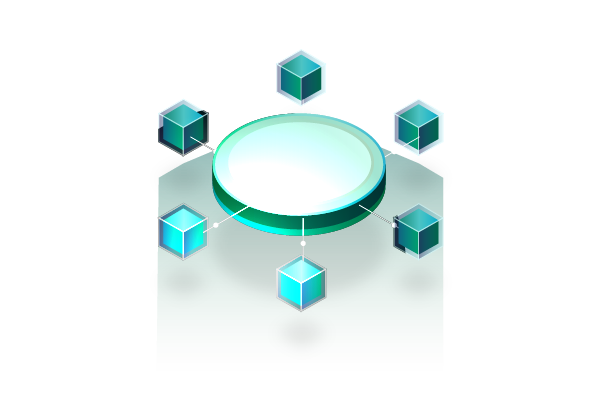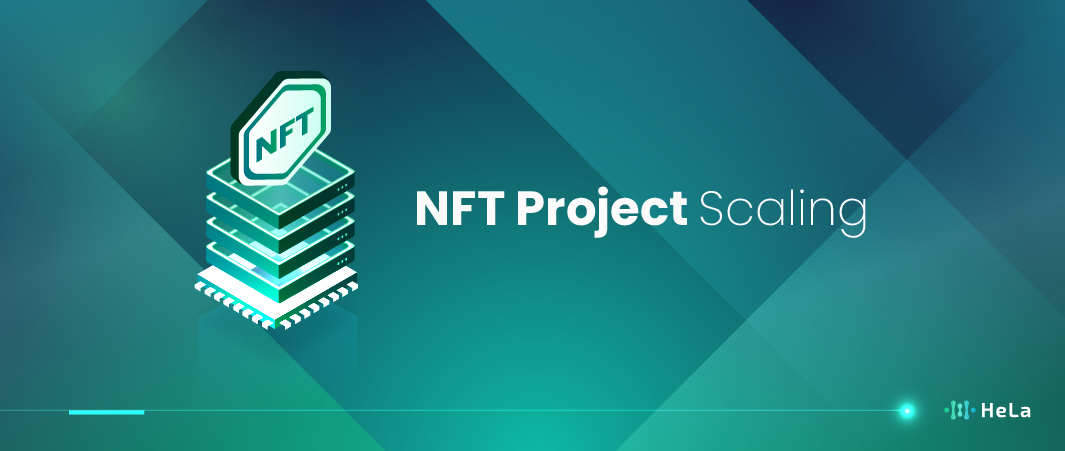In the fast-evolving realm of digital assets, NFTs have emerged as a groundbreaking concept, redefining ownership and value in the digital age. However, as a beginner, navigating through the intricacies of NFT project scaling can be daunting. This comprehensive resource aims to simplify this journey, providing you with the essential knowledge and tools to successfully scale your NFT project.
NFTs, or Non-Fungible Tokens, have taken the digital world by storm, offering a unique combination of art, ownership, and technology. Unlike traditional cryptocurrencies, each NFT is unique, providing a digital certificate of ownership for a specific item or piece of content. This uniqueness has opened up new avenues for artists, creators, and investors alike.
While the allure of NFTs is undeniable, scaling an NFT project comes with its own set of challenges. From understanding the technical aspects of blockchain to creating a community around your NFTs, the path to success requires careful planning and execution. This guide aims to demystify the process, offering step-by-step advice on how to scale your NFT project effectively.
As we delve into the world of NFT project scaling, remember that this journey is as much about creativity and innovation as it is about strategy and technical know-how. With the right approach, your NFT project can not only grow but also redefine the boundaries of what’s possible in the digital space.
Understanding the Basics of NFTs

Non-Fungible Tokens (NFTs) are a unique class of digital assets that have gained significant attention in the realm of blockchain and cryptocurrency. Unlike cryptocurrencies such as Bitcoin or Ethereum, which are fungible and can be exchanged on a one-to-one basis, NFTs are distinct because each token has unique properties and is not interchangeable. This uniqueness is what makes them “non-fungible.”
NFTs are typically created using a standard type of token on blockchain platforms, most commonly on Ethereum, which follows the ERC-721 or ERC-1155 standards. These standards ensure that the token has unique properties and can be distinguished from other tokens. The uniqueness of an NFT comes from its metadata and its identifiers, which are stored on the blockchain and confirm the ownership and authenticity of the NFT.
NFTs have opened up new possibilities in various fields by tokenizing real-world objects and digital creations, including:
- Art: Digital artists are tokenizing their works as NFTs, enabling them to sell their digital art in a way that ensures authenticity and ownership, similar to how traditional art is bought and sold.
- Music: Musicians and composers are using NFTs to tokenize their music, albums, and exclusive experiences, providing a new revenue stream and a unique way for fans to connect with artists.
- Gaming: In the gaming industry, NFTs are used to represent in-game assets, such as characters, skins, or special items. These NFTs can be bought, sold, or traded, allowing players to own their in-game assets truly.
Also Read: 10 Key Features of Web3: A Detailed Guide on Things You Need to Know
- Videos and Entertainment: Filmmakers and content creators are exploring NFTs to tokenize their work, whether it’s films, series, or unique video content, offering a new way to monetize and distribute content.
- Collectibles and Virtual Real Estate: NFTs are also popular in creating digital collectibles and virtual real estate, which can be bought and sold like physical assets, but in virtual worlds.
NFTs are typically bought, sold, and traded on specialized marketplaces designed for these types of digital assets. Transactions involving NFTs are mostly conducted using cryptocurrencies, and the ownership and transfer of an NFT are securely recorded on the blockchain, ensuring transparency and security.
The concept of NFTs represents a significant shift in the digital economy, offering a way to prove ownership, provenance, and scarcity of digital and tokenized real-world assets. As the technology and the market evolve, NFTs may potentially transform various industries by enabling new business models and creating new forms of value and ownership.
Laying the Foundation for Scaling
Laying the foundation for scaling an NFT (Non-Fungible Token) project is a multifaceted endeavor that requires a strategic approach, focusing not only on growth but also on establishing a solid groundwork that supports and sustains this growth over time. Here’s an expanded view of the key components:
1. Choosing the Right Blockchain Platform
- Compatibility and Performance: Select a blockchain that aligns with your project’s goals, ensuring it can handle the expected transaction volume and speed.
- Smart Contract Capabilities: The chosen platform should support smart contracts, which are essential for creating and managing NFTs, enabling automation, and ensuring the integrity of transactions.
- Community and Ecosystem: Opt for a blockchain with a strong and active community, as this can provide support, resources, and potential partnerships.
2. Understanding Market Demand
- Market Research: Conduct thorough research to understand the current trends, audience preferences, and the competitive landscape.
- Target Audience Identification: Clearly define your target audience, understanding their needs, behaviors, and the platforms they frequent.
- Value Proposition: Ensure that your NFTs offer real value, whether it’s through utility, exclusivity, or connected experiences, to make them more appealing to potential buyers.
3. Ensuring Uniqueness and Desirability of NFTs
- Creative and Technical Excellence: Invest in high-quality, original content and technical innovation to make your NFTs stand out.
- Storytelling and Emotional Connection: Craft a compelling narrative around your NFTs, as storytelling can significantly enhance their appeal and value.
- Scarcity and Exclusivity: Implement strategies like limited editions or special access to make your NFTs more desirable.
4. Ensuring Security and Authenticity
- Robust Security Measures: Implement strong security protocols to protect against fraud, hacking, and other vulnerabilities.
- Provenance and Ownership Tracking: Utilize the inherent traceability of blockchain to transparently track the history and ownership of each NFT, enhancing its authenticity and value.
- Legal Compliance and Intellectual Property Rights: Ensure compliance with relevant laws and regulations, and manage intellectual property rights carefully to avoid disputes and build trust.
5. Building Trust with Your Audience
- Transparency and Communication: Maintain open communication channels, provide clear and detailed information about your NFTs, and be transparent about your project’s goals and operations.
- Community Engagement and Support: Build and nurture a strong community around your NFT project. Engage with your audience regularly, gather feedback, and provide excellent support to foster trust and loyalty.
- Reputation Management: Actively manage your project’s reputation by delivering on promises, addressing issues promptly, and maintaining high ethical standards.
By meticulously addressing these aspects, you can lay a strong foundation for your NFT project, positioning it for successful scaling and long-term sustainability in the dynamic and evolving NFT marketplace.
Building a Community Around Your NFTs

Building a strong community around your NFTs is crucial for the success and longevity of your project. This community not only supports your work but also helps in spreading the word, attracting more enthusiasts, and increasing the perceived value of your NFTs. Here’s how you can foster a vibrant community:
Engagement is Key
Interact with your community regularly. Respond to comments, participate in discussions, and create polls to involve members in decision-making processes. This shows that you value their input and are committed to the project.
Exclusive Content and Perks
Offer exclusive content or benefits to your community members. This could be in the form of early access to new NFT drops, member-only events, or special editions of your NFTs. Such perks make members feel valued and increase their loyalty to your project.
Leverage Social Media and Forums
Platforms like Twitter, Instagram, Discord, and Reddit are great for community building. They allow for real-time interaction and can help in creating a buzz around your NFTs. Regular updates, behind-the-scenes content, and interactive sessions can keep the community engaged and growing.
Collaborate and Listen
Collaboration with other artists or influencers can introduce your project to a wider audience. Also, be open to feedback from your community. This can provide valuable insights into what your audience likes or wants, helping you tailor your future NFTs to their preferences.
Educate Your Audience
Many people are still new to the concept of NFTs. Educational content about the value, utility, and uniqueness of your NFTs can help in building a knowledgeable community that truly understands and appreciates your work.
Transparency and Trust
Be transparent about your processes, plans, and transactions. Trust is a critical component of community building, and transparency can significantly bolster the trust your community has in you and your project.
Utilize NFT Marketplaces
Platforms like OpenSea, Rarible, and Foundation not only allow you to showcase and sell your NFTs but also provide a space for creators and collectors to interact. Being active on these platforms can help you engage with your audience and gain valuable exposure.
Building a community around your NFTs is a continuous effort. It requires time, consistency, and genuine interaction. By nurturing a strong, engaged, and loyal community, you enhance the intrinsic value of your NFTs and pave the way for a sustainable and successful project.
Marketing and Promotion Strategies
Marketing and promotion strategies are vital components in the success and scalability of any NFT (Non-Fungible Token) project. The uniqueness of NFTs as a product requires a nuanced approach to marketing, one that goes beyond mere promotion to actually creating a narrative around your NFTs. This narrative should not only showcase the uniqueness of your NFTs but also resonate with your target audience, creating a connection that goes beyond the transactional.
One of the most effective ways to market your NFT project is through the strategic use of social media platforms. Platforms like Twitter, Instagram, Discord, and others can be powerful tools for storytelling, showcasing your NFTs, and engaging with your community. Regular updates, interactive posts, and creative content can help keep your audience engaged and informed about your project’s developments.
Collaborating with influencers is another potent strategy. Influencers can lend their credibility and audience to your project, providing a significant boost in visibility and trustworthiness. When selecting influencers, it’s crucial to choose those whose brand aligns with the ethos of your NFT project. This ensures that their promotion feels authentic and resonates with both your current and potential audience.
Participating in NFT events, both online and offline, is also a great way to increase your project’s visibility. These events are often gathering spots for NFT enthusiasts, collectors, and creators. Being present and active in these events can not only help in networking but also in showcasing your NFTs to a highly relevant audience. Additionally, speaking engagements or the opportunity to present your project at these events can position you as a thought leader in the space, adding to the credibility and attractiveness of your project.
Monitoring and Adapting to Market Trends

In the rapidly changing landscape of the NFT (Non-Fungible Token) market, it’s essential for creators, investors, and platforms to stay abreast of market dynamics to ensure continued success and relevance. The market’s volatility and innovation pace mean that trends can shift dramatically, influenced by factors such as technological advancements, regulatory changes, community sentiment, and broader economic conditions.
To effectively monitor and adapt to these market trends, it’s important to:
- Engage with the Community: Actively participating in forums, social media platforms, and other community hubs can provide real-time insights into what collectors and investors are currently interested in and what they may be moving away from.
- Leverage Analytics Tools: Utilize advanced analytics tools to monitor market trends, track the performance of your own NFTs, and understand the competitive landscape. This involves analyzing sales data, pricing trends, and the popularity of different types of NFTs.
- Understand Buyer Behavior: Dive deep into the demographics, preferences, and purchasing patterns of your target audience. This can involve conducting surveys, analyzing customer feedback, and studying the behavior of buyers on NFT platforms.
- Adapt Marketing and Sales Strategies: Based on insights gained from market analysis and customer feedback, adapt your marketing strategies to align with current trends. This may involve changing the themes or types of NFTs you create, adjusting pricing strategies, or finding new ways to engage with potential buyers.
- Innovate and Differentiate: In a market saturated with digital assets, standing out is crucial. This can involve exploring new forms of digital art, incorporating emerging technologies like AR/VR, or offering unique ownership benefits.
Also Read: Throughput vs Bandwidth: Key Differences Guide and Tools
- Stay Informed on Regulatory Changes: The legal landscape surrounding NFTs is still evolving. Staying informed about regulatory changes and ensuring compliance can protect you from legal risks and provide a competitive advantage.
- Focus on Building Long-Term Value: While short-term trends can offer quick wins, focusing on creating NFTs that offer long-term value to buyers can foster sustained success. This involves considering the historical and cultural significance of your NFTs, ensuring authenticity and rarity, and building a strong brand reputation.
By maintaining a flexible and informed approach, you can navigate the complexities of the NFT market effectively, ensuring your offerings remain relevant and desirable to the evolving preferences and behaviors of buyers.
Conclusion
Scaling an NFT project is a journey full of learning, innovation, and growth. As you venture into this exciting space, remember that each step you take is building towards a more vibrant and dynamic NFT ecosystem.
The challenges you’ll face while scaling your NFT project are not just obstacles but opportunities to innovate and stand out. With a strong foundation, a dedicated community, and an effective marketing strategy, your project has the potential to redefine the NFT landscape.
The world of NFTs is just getting started, and the possibilities are endless. As you continue to scale your project, keep pushing the boundaries, stay true to your vision, and most importantly, enjoy the creative journey you’re on.
Scaling an NFT project successfully requires a blend of creativity, technical understanding, and strategic planning. By following the guidelines outlined in this comprehensive resource, beginners can navigate the complexities of the NFT world and pave the way for a thriving and successful project. Remember, in the world of NFTs, the only limit is your imagination. Happy scaling!
Disclaimer: The information provided by HeLa Labs in this article is intended for general informational purposes and does not reflect the company’s opinion. It is not intended as investment advice or recommendations. Readers are strongly advised to conduct their own thorough research and consult with a qualified financial advisor before making any financial decisions.

Joshua Soriano
I am a writer specializing in decentralized systems, digital assets, and Web3 innovation. I develop research-driven explainers, case studies, and thought leadership that connect blockchain infrastructure, smart contract design, and tokenization models to real-world outcomes.
My work focuses on translating complex technical concepts into clear, actionable narratives for builders, businesses, and investors, highlighting transparency, security, and operational efficiency. Each piece blends primary-source research, protocol documentation, and practitioner insights to surface what matters for adoption and risk reduction, helping teams make informed decisions with precise, accessible content.
- Joshua Soriano#molongui-disabled-link
- Joshua Soriano#molongui-disabled-link
- Joshua Soriano#molongui-disabled-link
- Joshua Soriano#molongui-disabled-link

